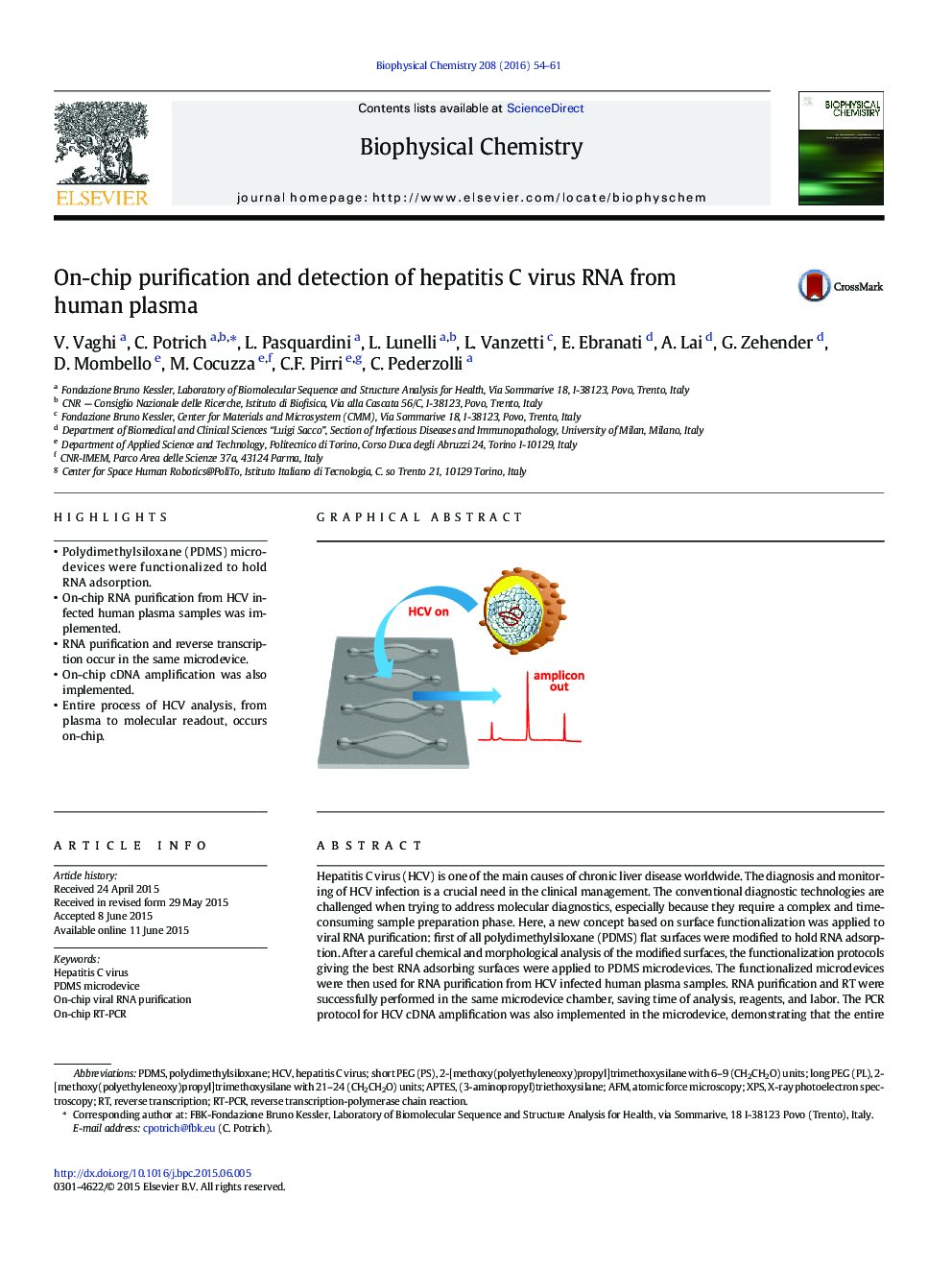| کد مقاله | کد نشریه | سال انتشار | مقاله انگلیسی | نسخه تمام متن |
|---|---|---|---|---|
| 5370849 | 1503911 | 2016 | 8 صفحه PDF | دانلود رایگان |

- Polydimethylsiloxane (PDMS) microdevices were functionalized to hold RNA adsorption.
- On-chip RNA purification from HCV infected human plasma samples was implemented.
- RNA purification and reverse transcription occur in the same microdevice.
- On-chip cDNA amplification was also implemented.
- Entire process of HCV analysis, from plasma to molecular readout, occurs on-chip.
Hepatitis C virus (HCV) is one of the main causes of chronic liver disease worldwide. The diagnosis and monitoring of HCV infection is a crucial need in the clinical management. The conventional diagnostic technologies are challenged when trying to address molecular diagnostics, especially because they require a complex and time-consuming sample preparation phase. Here, a new concept based on surface functionalization was applied to viral RNA purification: first of all polydimethylsiloxane (PDMS) flat surfaces were modified to hold RNA adsorption. After a careful chemical and morphological analysis of the modified surfaces, the functionalization protocols giving the best RNA adsorbing surfaces were applied to PDMS microdevices. The functionalized microdevices were then used for RNA purification from HCV infected human plasma samples. RNA purification and RT were successfully performed in the same microdevice chamber, saving time of analysis, reagents, and labor. The PCR protocol for HCV cDNA amplification was also implemented in the microdevice, demonstrating that the entire process of HCV analysis, from plasma to molecular readout, could be performed on-chip. Not only HCV but also other microdevice-based viral RNA detection could therefore result in a successful Point-of-Care (POC) diagnostics for resource-limited settings.
Journal: Biophysical Chemistry - Volume 208, January 2016, Pages 54-61